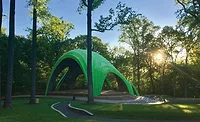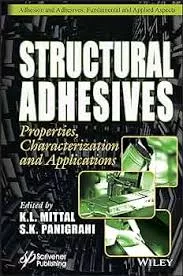Customized Structural Adhesives Deliver Multiple Benefits
Structural adhesives help automotive manufacturers meet existing and upcoming global regulations for fuel efficiency and CO2 emissions.
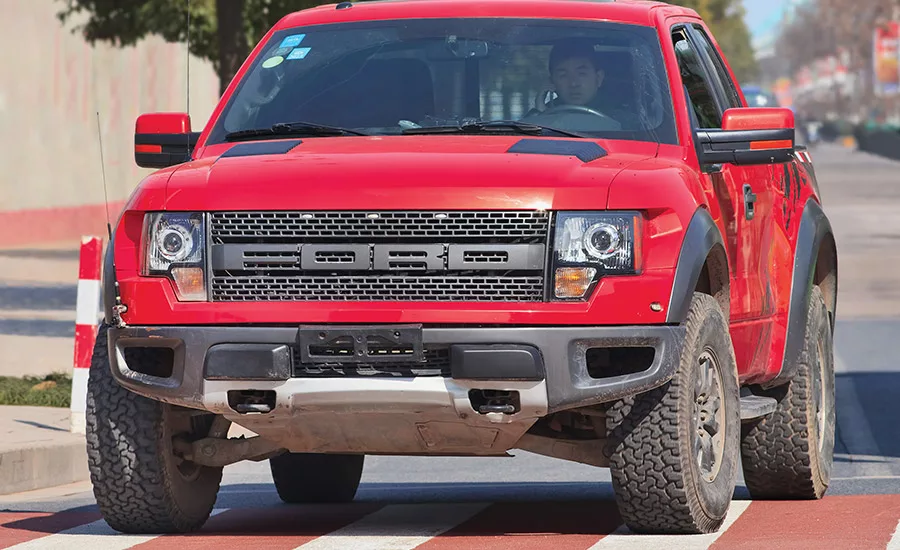
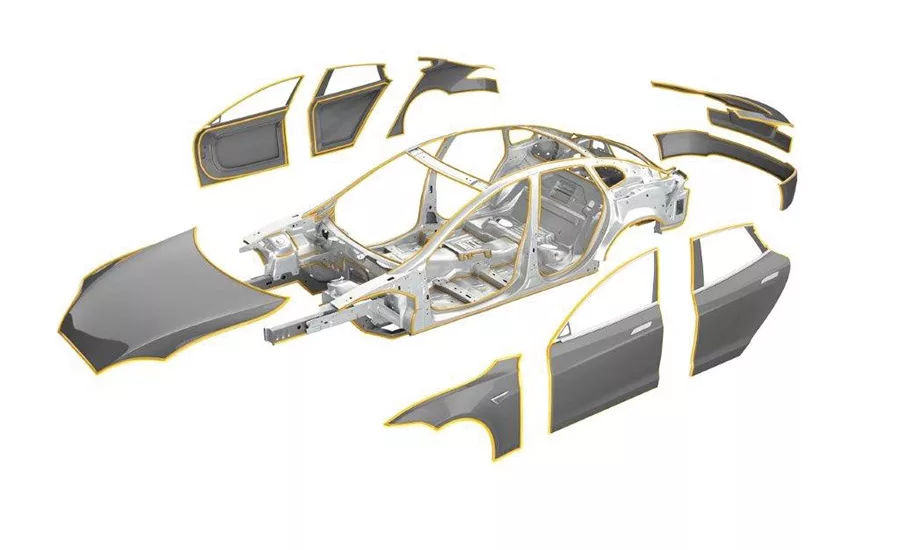
One- and two-component epoxy structural adhesives provide high-performance bonding to steel, aluminum, and other materials to enhance stiffness, NVH, crash, and durability performance.
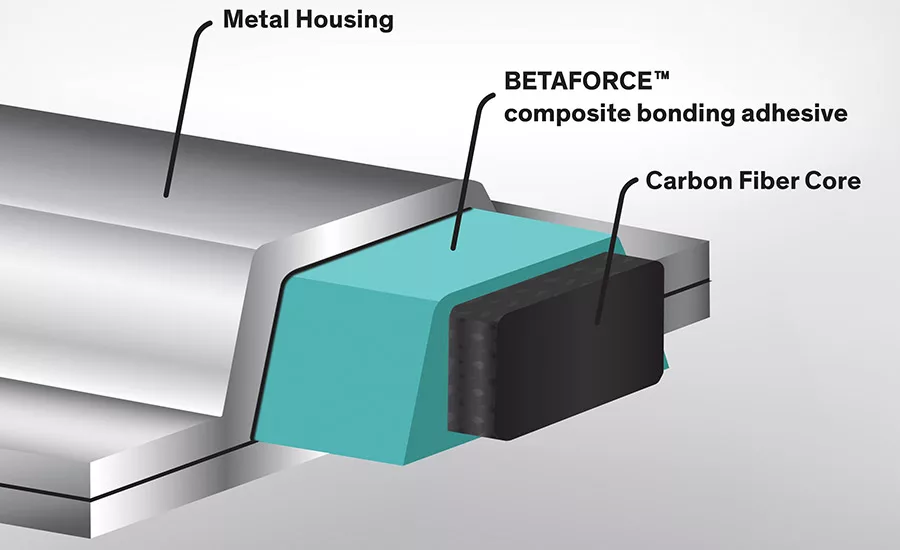
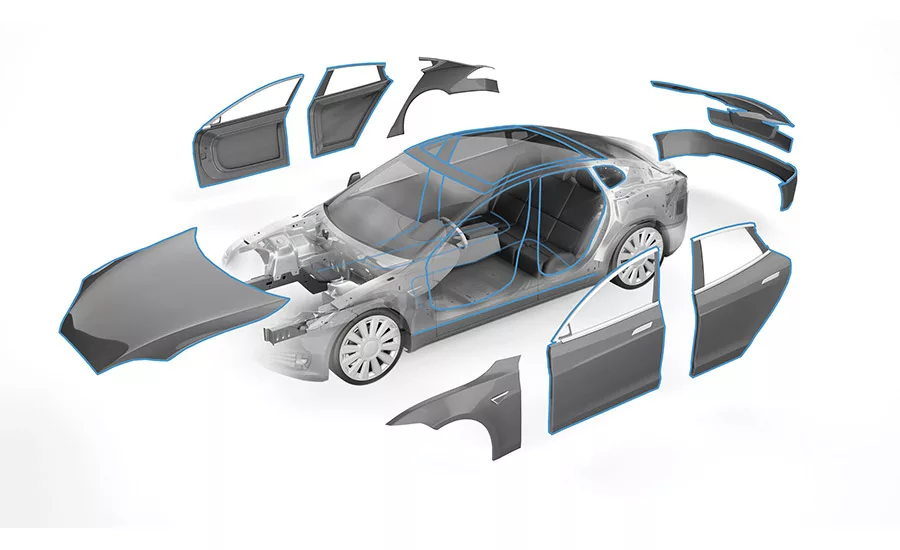
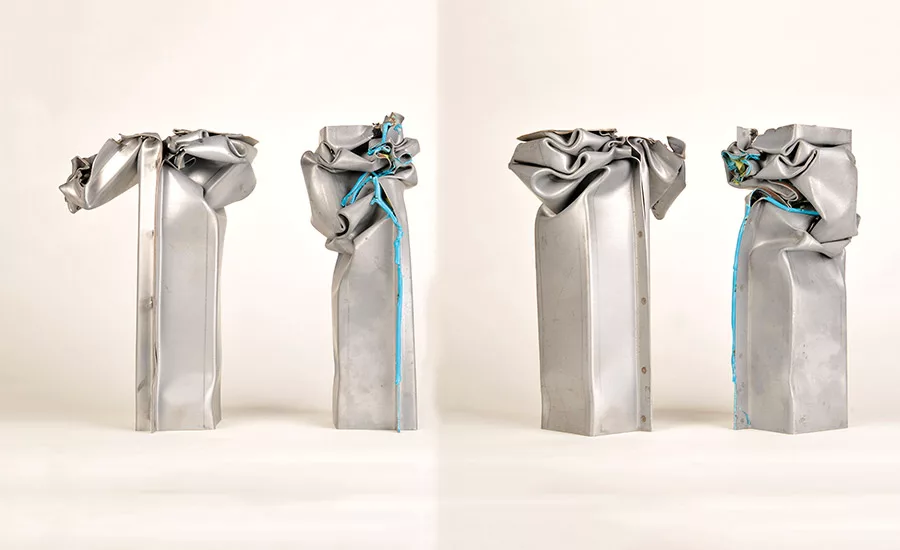
Automotive and commercial transportation manufacturers must design and produce vehicles that meet both consumer expectations and government standards for safety, comfort, performance, and sustainability. These expectations are continually evolving and vehicles must closely follow if not lead the trend.
For example, environmental impacts now are a central consideration in vehicle development, both in terms of fuel efficiency and CO2 emissions throughout the vehicle’s lifecycle, which can be up to 15 years. This has led to a revolution in vehicle design, bringing in new lightweight materials to replace and partner with more than 100 years of stand-alone steel.
Simultaneously, safety requirements for passenger vehicles are also rising, which often results in solutions that add weight. Thus, while manufacturers are trying to design lighter vehicles, they have to comply with safety standards that vary by global region. This conflict is also seen around issues such as automation, expanded electronic capabilities and interior comfort. Customers want more, but that can add weight and other complexities to the vehicle.
Lightweight materials help solve environmental concerns, but they also require changes in the complex manufacturing and design process. Traditional assembly techniques, such as welding and mechanical fastening, are incompatible for many lightweight materials, and customers are looking for partners to collaborate on workable solutions that meet multiple objectives, including efficiency, cost, speed, longevity, comfort, and durability.
Structural Adhesives for Lightweighting
By enabling lightweight multi-material substrate joining within the existing manufacturing infrastructure, structural adhesives are a cost-effective technology that helps automotive manufacturers meet existing and upcoming global regulations for fuel efficiency and CO2 emissions.
Structural adhesives* can provide automobile and commercial transportation manufacturers with a joining technique for lightweight materials that provides advantages including: increased load-bearing capability; improved safety and crash behavior; reduced vibrations and noise; and optimized ride, driving/handling and durability. These innovative products support the current trend of using sheet metal parts to replace extruded parts, which allows a more spacious feel in the vehicle interior.
Structural adhesives also enable the production of lighter-weight vehicles by allowing down-gauging of substrates and enabling dissimilar material bonding with lightweight substrates such as aluminum and carbon-fiber-reinforced composites. The value of lightweighting is even more pronounced in electric vehicles as a way to offset the additional battery weight and to extend the vehicle range.
Composite-to-Metal Bonding
BMW’s design for its new 7 Series requires the use of various lightweight materials. In one innovative area, carbon fiber composite roof beams are bonded to a metal compartment. This offers significant weight reduction compared to traditional designs via the use of advanced carbon-fiber composite materials while maintaining the integrity of the vehicle design. This multi-material design concept is enabled by innovative two-component polyurethane adhesive technology; more than 150 m of structural adhesives are used throughout the vehicle.
The structural adhesive provides a continuous bond line and cohesive joining of surfaces, as well as a cycle time of around
1 min. On the assembly line, where speed is important, this version of the adhesive offers curing properties that can be adjusted to accommodate specific mounting requirements in the plant, such as long open times and quicker curing time by infrared treatment (latency technology enables cure on demand).
Like other structural adhesives, this one also is used to bond different parts in the vehicle roof, providing increased load-bearing capability and increased static and dynamic stiffness. This leads to improved safety and crash behavior, reduced vibrations and noise, optimized ride, driving and handling characteristics, and extending the vehicle life span and long-term value via higher durability.
Aluminum Bonding
With a front-end, cab, box and tailgate of high-strength, military-grade aluminum alloy and a frame of high-strength, lightweight steel, Ford Motor Co.’s F-150 uses structural adhesives for durability, weight reduction and improved manufacturing efficiencies. The lightweighting of the vehicle provides improved acceleration, load carrying capacity, handling and fuel economy. The enabled weight savings is 700 lbs per vehicle.
A customized adhesive offers excellent adhesion and superior stress durability on aluminum, as well as process stability and resistance to degradation and corrosion that comes with environmental aging. It provides economic benefits for vehicle manufacturers incorporating lightweight substrates in their designs by using existing manufacturing infrastructure, avoiding fines and penalties from government regulations, and enabling OEMs to produce more attractive vehicles for sale to consumers.
Exclusively formulated for aluminum applications, the adhesive is a highly toughened epoxy-based one-component solution. Using specially developed polymers, it achieves high impact resistance and stress durability of the bonded joints. It allows automotive engineers to design vehicles that achieve maximum weight savings, as well as lower fuel consumption and carbon dioxide emissions.
The adhesive’s mechanical properties including high elastic modulus, high glass-transition temperature combined with high static and dynamic strength make it a bonding solution to durably join many types of aluminum alloys. The adhesive bonds joints or structures that resist impact loads and stress load over the vehicle’s entire lifecycle. These properties are achieved by having developed novel toughening and curing accelerator technologies, which are incorporated into the adhesive formulation. The adhesive rheology is tailored so that it allows a rapid automated application in real mass-production conditions, such as the F-150 assembly line.
This patented adhesive formulation contains unique toughening polymers and curing technologies. It offers superior joint durability that resists high stress and fatigue loading and can join all relevant aluminum alloys.
Commercial Vehicles
PACCAR is a global technology leader in the design, manufacture and customer support of premium light-, medium-, and heavy-duty trucks under the Kenworth, Peterbilt, and DAF nameplates. The company’s goal was to eliminate exterior Huck bolt fasteners to design an aesthetically pleasing and aerodynamic cab that was also engineered for increased structural durability and sealing, leading to overall improvements to vehicle ride and handling. The added stiffness and sealing would also improve vehicle acoustics. The new requirements created a mandate for an innovative joining solution that would work with aluminum.
A customized two-part epoxy structural adhesive was formulated that also enabled an industry-first automated robotic process for untreated aluminum bonding. Aluminum is a more challenging bonding surface than ferrous metals, and may require surface pretreatment prior to durable bonding. The industry challenge was to validate and implement a bonding system for untreated aluminum, which is an important lightweight metal being used by manufacturers to achieve aggressive fuel economy targets. Because aluminum was such a challenging surface to bond durably, this new solution offered an opportunity for a new technology platform in the industry. The new adhesive was also solvent free, eliminating the need for substrate pre-treatments such as abrasion, coatings or primers.
To address the bonding challenge with untreated aluminum, a hybrid chemistry approach resulted in a highly functionalized flexible polymer that is compatible with metal oxide surfaces. The combination of these polymers creates an inter-penetrating network that allows for durable adhesion to untreated aluminum and composites, optimized stiffness for joint durability and improved vehicle stiffness.
The new cab structure is 20 lbs lighter than the previous cab structure, yet is significantly larger in size—2.1 m
wide compared to 1.9 m wide. Significant direct and indirect cost avoidance savings were realized due to no surface preparation on oily untreated aluminum surfaces. In addition, noise and ergonomic improvement for plant personnel is achieved by replacing the manual Huck bolt operation with newly developed adhesive technology and self-piercing rivets, enabling robotic process assembly.
Other commercial transportation programs that could benefit from this structural adhesive include multi-material lightweight vehicle designs and modules, new truck sleeper units, new medium-duty truck designs, and lightweight semi-trailers. This innovation has been a game changer because it enables long-term bond integrity to untreated aluminum without traditional surface treatments, lowering raw material costs while supporting lightweight applications.
Driving Innovation
The future is bright for structural adhesives as an enabling technology that can be customized to support the goals and requirements of automotive and commercial transportation manufacturing. The chemistry enables customization and collaboration between customers and suppliers, and this will continue to drive industry innovation in vehicle sustainability, design, and production. ASI
For more information, visit www.dowautomotive.com.
*Dow Automotive Systems’ BETAMATE™ structural adhesives and BETAFORCE™ composite bonding adhesives.
Looking for a reprint of this article?
From high-res PDFs to custom plaques, order your copy today!



